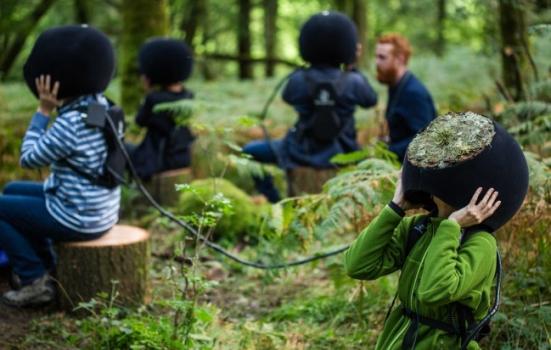Following on from the Digital R&D Fund for the Arts, nine arts organisations will be supported to develop their products and services to the ‘investment ready’ stage.

Arts organisations are being given the opportunity to develop new commercial enterprises through an accelerator programme.
Following on from the Digital R&D Fund for the Arts, nine products and services that exploit digital technologies will be developed to the ‘investment ready’ stage over a 12-week programme.
The organisations will be supported through workshops, one-to-one mentoring opportunities, expert clinics and networking delivered by The Accelerator Network.
The Digital Arts and Culture Accelerator, which is launched by Nesta and Arts Council England (ACE), will culminate in a pitch event for potential social and commercial investors in mid-September.
The products include a subscription model ticketing solution, a platform for creating iBeacon activated museum tours, and an app that helps children on the autistic spectrum attend live arts events.
Anna Dinnen, Senior Programme Manager within Nesta’s Digital Arts & Media team, said: “Our strong belief is that the sector has huge potential to produce new and exciting, particularly digital, products and services.”
She added: “Within the portfolio, there is a range of more commercial offers and offers that are more in tune with the social investment community and there are some that maybe straddle both.”
The accelerator programme will be delivered with £280k of strategic Grant in Aid funding from ACE and additional in-kind support from Nesta.
Paul Glinkowski, Senior Manager, Creative Media for Arts Council England, said: “We spotted that the accelerator is something that has a wide purchase within the wider creative economy. This project is testing whether it is something that can be transferable.”
Successful projects
The nine organisations, which will each receive £20k to support their participation in the programme, are:
- Abandon Normal Devices, which plans to develop a commercial production studio, creating content for 360 degree environments.
- Circus Starr, which hopes to further develop its mobile app that helps children with autistic spectrum disorders attending live arts events so that it can be licensed and re-purposed for other arts and cultural experiences.
- Comma Press, which hopes to adapt its digital self-publishing platform for fiction, poetry and essays in into a platform that can support spoken-word poetry workshops in schools.
- Firestation, which plans to build on its success testing dynamic pricing models to develop a cloud-based, subscription model ticketing solution encompassing a full suite of sales and resource management tools for arts and entertainment venues.
- Metro-Boulot-Dodo, which plans to create a content management system platform that allows museums and heritage organisations to create iBeacon activated creative trails and tours.
- Ministry of Stories, which plans to develop its online writing and mentoring platform, The Story Engine.
- Miracle Theatre, which plans to build on its success digitally capturing and distributing small-scale theatre.
- National Holocaust Centre & Museum, which plans to offer its services creating interactive ‘stories’/experiences for the arts and heritage market.
- Orphans of the Storm, which will further develop its Electricomics app, which allows users to create interactive digital comics.
Evaluating the Fund
The organisations were all previously funded through the Digital R&D Fund for the Arts, a three-year programme launched by ACE, the Arts and Humanities Research Council and Nesta in 2012. The Fund invested £7m in 52 collaborative projects involving cultural organisations, academics and technology companies, which tested how new technology could be used for audience development and new approaches to business modelling.
The launch of the accelerator coincides with the publication of the final evaluation of the Digital R&D Fund for the Arts.
The report, by Tom Fleming Creative Consultancy, found the Fund helped organisations develop new approaches to audience development that extended their reach, but it was less successful at introducing new business models or increasing revenue. Just over a quarter of organisations funded through the programme expected their project to have an impact on their organisation’s profitability, but only 5% did. While 40% hoped to connect with new communities, 65% reported actually doing so.
The future of R&D
With no plans for ACE to support another Digital R&D Fund for the Arts, the report concluded: “The challenge going forward for funders and funded alike is to nurture a landscape that encourages collaboration, risk-taking and R&D, internally within the arts and cultural sector, and crossing over to other disciplines.”
Anna Dinnen said: “We’ve learned a lot through doing the R&D about structuring these kinds of interventions. Doing the accelerator is part of our attempt to understand the end-to-end process.”
The evaluation also found that funded organisations were left more confident, experimental and skilled in their use of digital technology. It said the Fund had highlighted a skill and capacity deficit in the sector and that an ongoing challenge was how to maximise the potential of technological and cultural change.
“We’re taking note of the priority areas that are identified” said Paul Glinkowski. “Some of the other strategic projects we are involved in will be helping to address some of those deficits.” He pointed to a number of training initiatives ACE is supporting, including by The Space and BBC Academy, with Google and ACE’s digital video initiative Canvas.
Once the Digital R&D Fund’s website is closed at the end of the year, the ‘Toolkit for the Arts’ and other resources will be migrated to ACE’s website, to preserve the legacy of the programme. ACE and Nesta also plan to run a fourth Digital Culture Survey next year, to monitor how the arts sector’s engagement with technology is changing.
An evaluation of the accelerator projects will be published in 2017.





Comments
Pavithra B replied on Permalink
iBeacon Technology in Museums